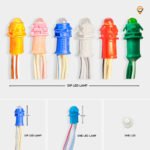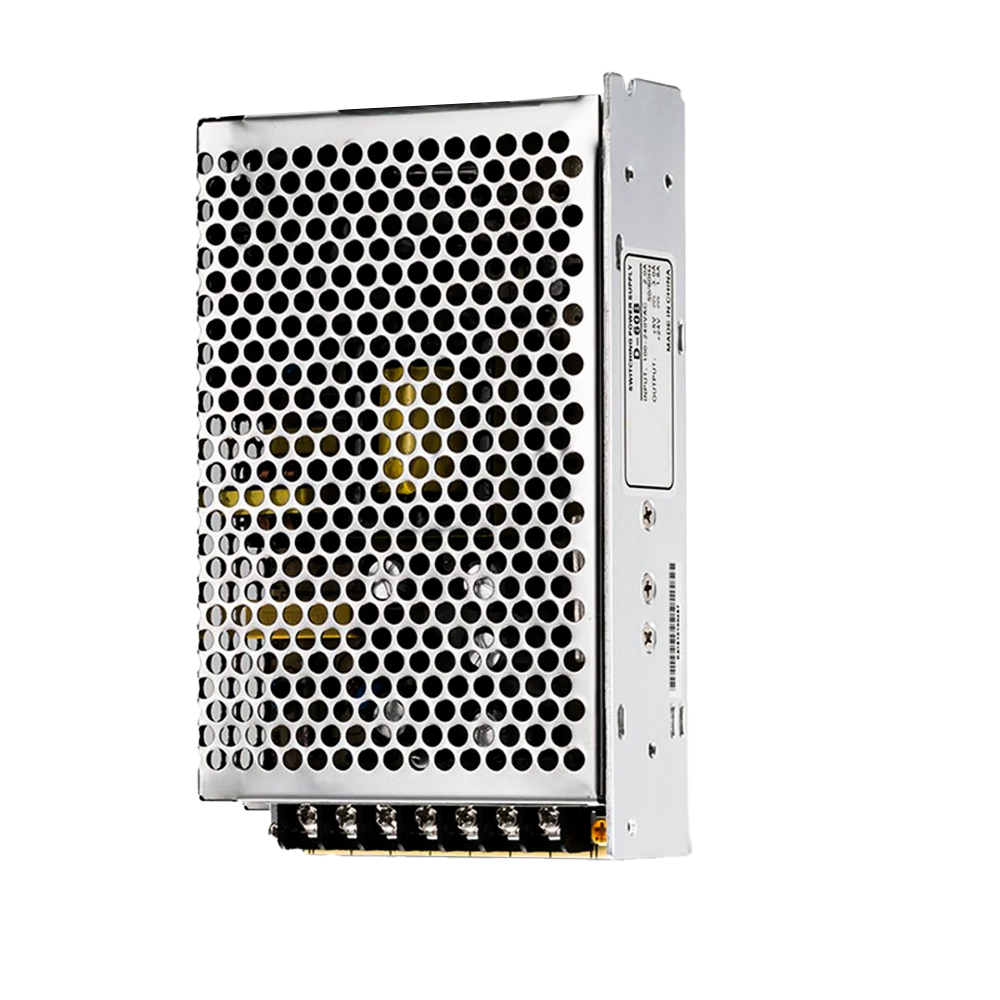
Differences Between DIP and SMD LED Chips in 2025
20/02/2025Choosing the Right Power Supply for 5V and 12V Pixel LED Lights
When it comes to setting up Pixel LED lighting, one of the most important—and often overlooked—decisions is choosing the right power supply. Whether you’re using 5V WS2812B LEDs or 12V WS2811 strips, the power supply you pick can make or break your project. From voltage stability to long-term performance, a good power supply ensures your LEDs shine bright, stay cool, and last long.
Let’s break down everything you need to know: the types of power supplies, which brands you can trust (like SNO and HiLight), and the difference between slim body and regular SMPS units, all tailored for 5V and 12V Pixel LED applications.
Why Pixel LED Projects Need the Right Power Supply
Pixel LEDs are not like regular LED strips. Each tiny LED has a microchip that controls its color and brightness. That’s what makes them “pixel” LEDs—each one can show a different color at the same time.
But with great power comes great demand. Every pixel pulls current. Multiply that by hundreds of LEDs, and your power requirements go up fast. If your power supply can’t handle the load, you’ll get flickering, dim lights, or even damage.
5V vs 12V Pixel LED – What’s the Difference?
5V Pixel LEDs
Used in LEDs like WS2812B and SK6812
-
They need more power injection because voltage drops faster at 5V.
-
You’ll also need thicker wires to handle the current safely.
-
These are great for shorter runs, tight patterns, or where color accuracy really matters.
12V Pixel LEDs
Used in WS2811 or GS8208 strips
-
Better for longer runs—less voltage drop.
-
Can power more LEDs from a single source.
-
Easier wiring, especially for larger installations like outdoor displays or building facades.
What Kind of Power Supply Should You Use?
Most LED pixel projects use a type of power supply called SMPS – Switched-Mode Power Supply. These are efficient, compact, and cost-effective. You can find them in various shapes, sizes, and wattage ratings. The key is picking the right one for your voltage and current needs.
Slim Body SMPS vs Normal Body SMPS
This is where many installers get confused. Let’s make it simple:
Slim Body SMPS
-
Designed to save space.
-
Great for LED boards, under shelves, or places with limited space.
-
Usually come with ventilated metal cases for passive cooling.
-
Work well for medium-power applications (like 60W to 150W).
-
Often used in decorative lighting and signage.
Normal Body SMPS
-
Bigger and bulkier, but often more durable.
-
Designed for heavier loads, like 150W to 500W+.
-
Can include internal fans or better heat sinks.
-
Ideal for commercial setups, stage lighting, or long LED strips.
So, if you’re mounting LEDs in a tight enclosure, go for slim. If you’re running a long LED wall, stick with the regular box-style SMPS.
Calculating How Much Power You Need
Here’s a quick way to do it:
Total Power (W) = Number of LEDs × Current per LED × Voltage
Let’s say you have 300 WS2812B LEDs:
-
300 LEDs × 0.06A × 5V = 90W
-
Add 20–30% buffer: You’ll need at least a 5V 120W power supply
For 300 WS2811 (12V):
-
300 × 0.018A × 12V = 65W
-
With buffer: use a 12V 80W or 100W unit
Always go higher than your estimate so the power supply doesn’t run at full load.
Top Power Supply Brands for Pixel LED Projects
SNO Power Supplies
-
Affordable and reliable.
-
Offer 5V and 12V SMPS in both slim and normal designs.
-
Built with safety features like overload and short circuit protection.
-
Commonly used in CCTV, signage, and pixel LED setups.
HiLight Power Supplies
-
Known for rugged design and thermal stability.
-
Ideal for outdoor or high-demand applications.
-
Provide excellent voltage regulation, which is crucial for 5V pixel LEDs.
-
Widely used in LED displays, decor lighting, and advertising boards.
Other Reputed Brands
-
KDN: Top-tier industrial performance, but pricey.
-
Mornsun: Good for automation and lab work.
-
Delta: Great for long-term reliability in professional settings.
Real-World Use Cases: 5V and 12V Pixel LED Installations
5V Pixel LED Projects
-
Indoor pixel displays
-
DJ booths and stages
-
Custom LED effects (like cosplay props)
-
3D signboards with tight pixel density
In these setups, slim 5V SMPS from SNO or HiLight work well. Just make sure to inject power every few feet to prevent dimming at the far end.
12V Pixel LED Projects
-
Outdoor signage
-
Architectural lighting
-
Long LED strip runs
-
Large animations or display boards
Here, a 12V 10A or 15A SMPS in a box form is your best bet. The higher voltage handles long distances better and reduces wiring complexity.
Tips for a Smooth LED Power Setup
-
Always test voltage at the LED end, not just at the PSU.
-
Use fuse protection on power lines for safety.
-
For big projects, split the load over multiple supplies or inject power in zones.
-
Ensure your PSU has ventilation and avoid sealing it in airtight boxes.
-
Choose branded supplies with proper certifications like CE, BIS, and RoHS.
Conclusion
When you’re working with pixel LEDs, it’s easy to focus on the controller or programming. But don’t forget—the power supply is the foundation. Without stable, clean power, your animations won’t run properly, colors will be off, and components can burn out early.
Stick with trusted brands like SNO and HiLight, pick the right voltage (5V or 12V) for your LEDs, and choose between slim or normal SMPS depending on your space and wattage needs.
Power your project right—and your LEDs will reward you with bright, brilliant, and reliable performance.






